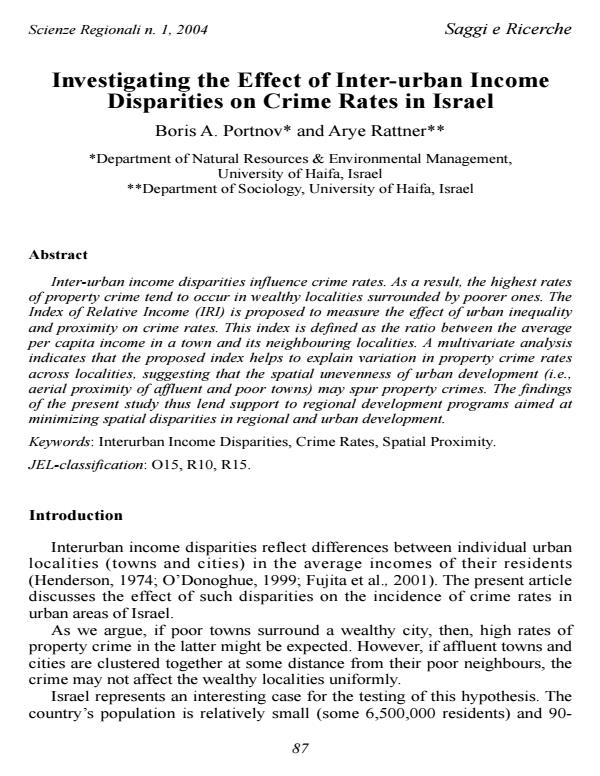Investigating the effect of inter-urban income disparities on crime rates in Israel
Titolo Rivista SCIENZE REGIONALI
Autori/Curatori Boris A. Portnov, Arye Rattner
Anno di pubblicazione 1 Fascicolo 2004/1 Lingua Inglese
Numero pagine 22 P. Dimensione file 171 KB
DOI
Il DOI è il codice a barre della proprietà intellettuale: per saperne di più
clicca qui
Qui sotto puoi vedere in anteprima la prima pagina di questo articolo.
Se questo articolo ti interessa, lo puoi acquistare (e scaricare in formato pdf) seguendo le facili indicazioni per acquistare il download credit. Acquista Download Credits per scaricare questo Articolo in formato PDF

FrancoAngeli è membro della Publishers International Linking Association, Inc (PILA)associazione indipendente e non profit per facilitare (attraverso i servizi tecnologici implementati da CrossRef.org) l’accesso degli studiosi ai contenuti digitali nelle pubblicazioni professionali e scientifiche
Investigating the Effect of Inter-urban Income Disparities on Crime Rates in Israel (Boris A. Portnov and Arye Rattner) - ABSTRACT: Inter-urban income disparities influence crime rates. As a result, the highest rates of property crime tend to occur in wealthy localities surrounded by poorer ones. The Index of Relative Income (IRI) is proposed to measure the effect of urban inequality and proximity on crime rates. This index is defined as the ratio between the average per capita income in a town and its neighbouring localities. A multivariate analysis indicates that the proposed index helps to explain variation in property crime rates across localities, suggesting that the spatial unevenness of urban development (i.e., aerial proximity of affluent and poor towns) may spur property crimes. The findings of the present study thus lend support to regional development programs aimed at minimizing spatial disparities in regional and urban development.
Boris A. Portnov, Arye Rattner, Investigating the effect of inter-urban income disparities on crime rates in Israel in "SCIENZE REGIONALI " 1/2004, pp , DOI: